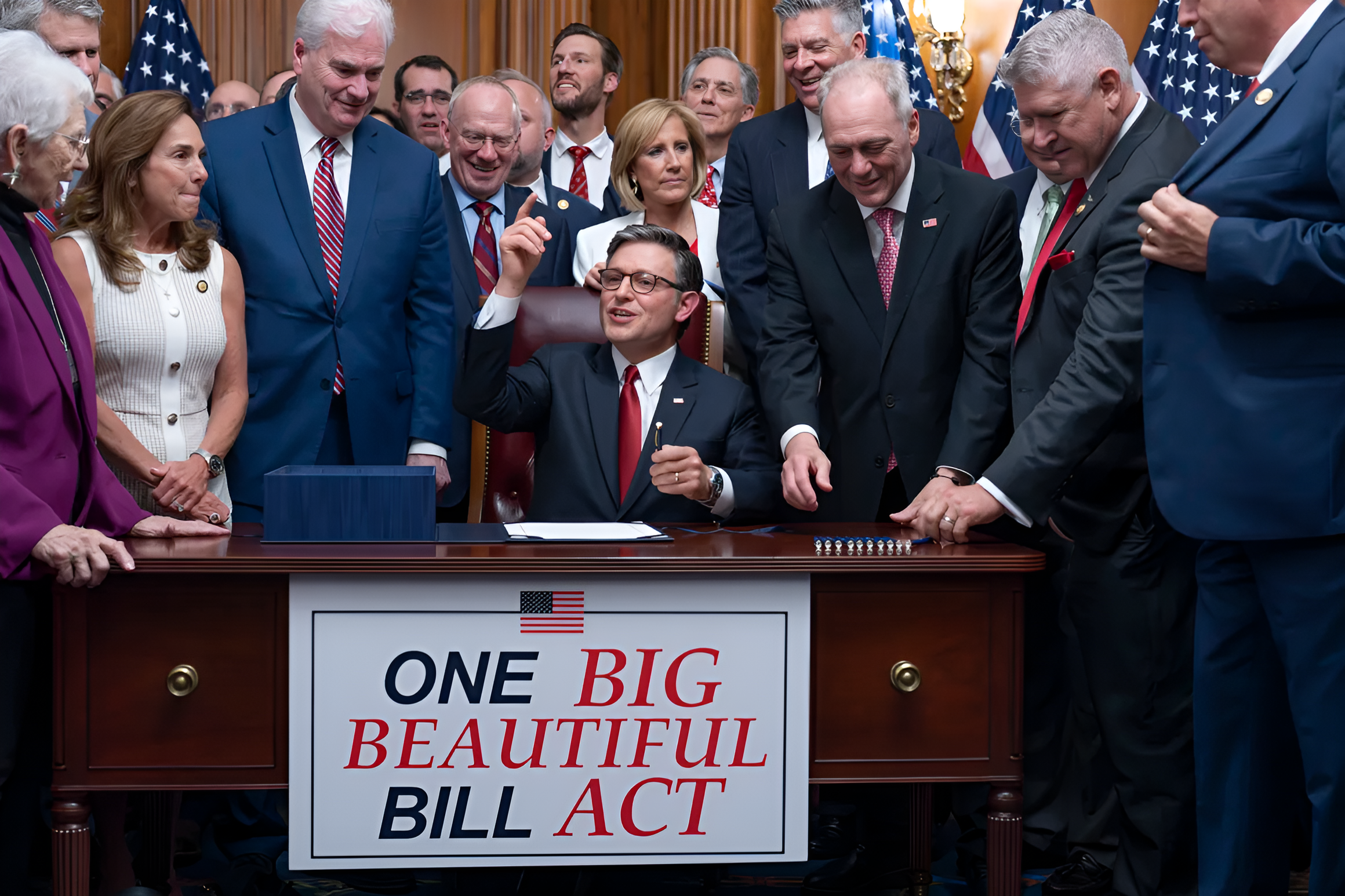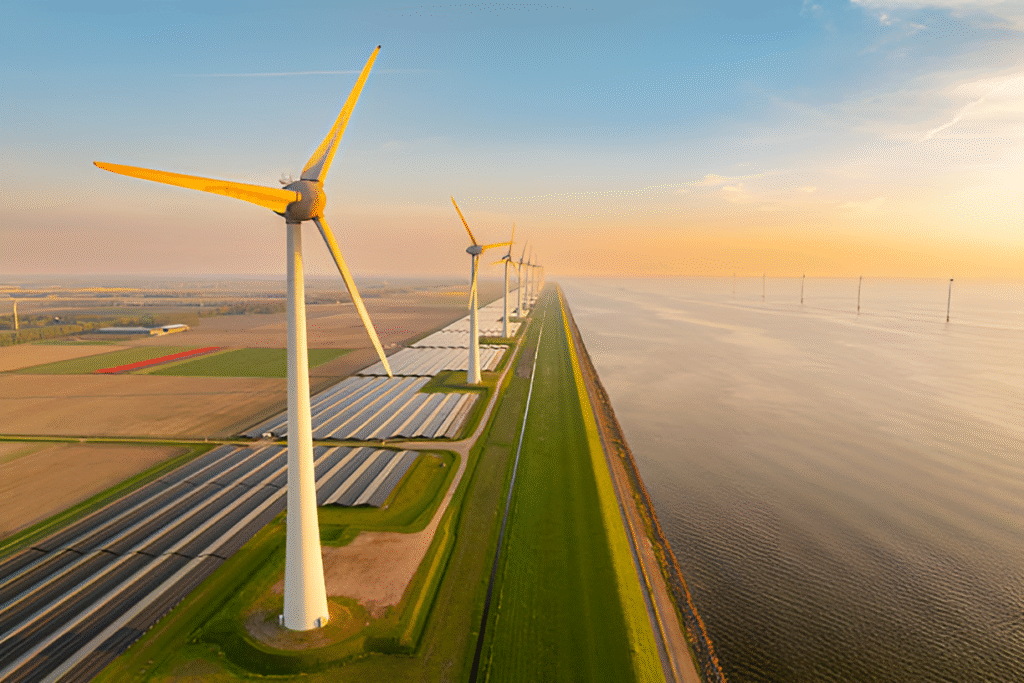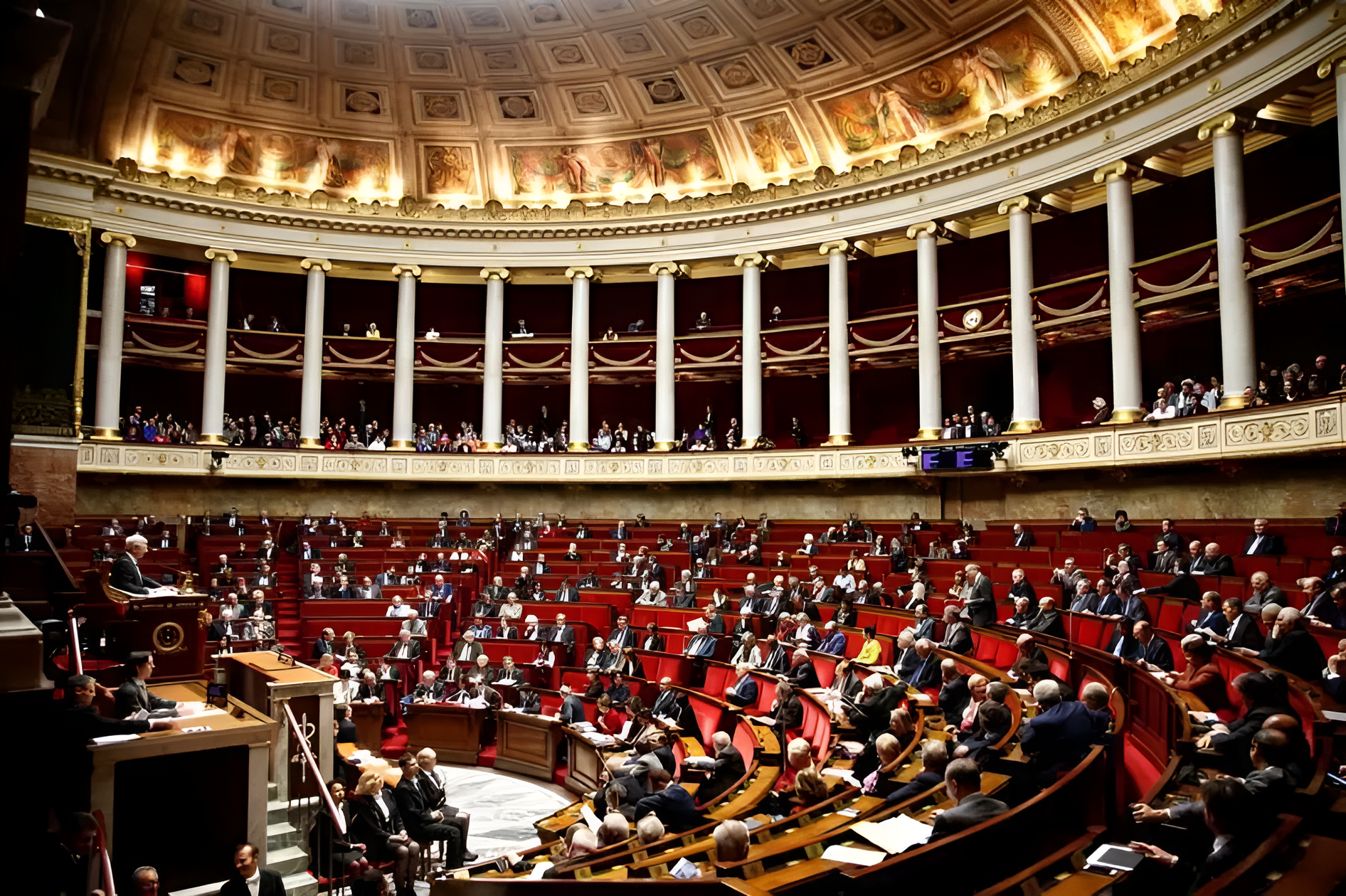One wind turbine can generate enough electricity to power nearly 1,000 homes. But because of the so-called “Big Beautiful Bill,” hundreds of those turbines might not rise — and America’s clean-energy momentum may fizzle.
Advertised as a patriotic remake of America’s energy policy, the proposal includes the passage of a Senate amendment that would slap punitive tariffs on the backbone the wind power industry in the US. While a proposed tax on wind and solar was dropped from the, the final bill still des the phase-out of clean energy tax credits, essentially swifter projects only have two years — until 2027 — to be up and running, or lose critical financial assistance.
That may seem like a small tweak. It isn’t. Wind projects, particularly large farms, take years of planning, permitting and investment. If the bill reduces the timeline, it is throwing sand in the gears of an industry that is creating jobs, cutting emissions and giving new life to rural communities across the country.
These aren’t theoretical losses. Up to 72 percent of planned clean energy installations are at risk of being delayed or canceled, analysts say. That means lost work for turbine technicians and manufacturers. Lost Income for Farmers Leasing Land. And higher energy costs for families that could have benefited from cheap, homegrown power.
Wind power is not a dreamer’s dream. It’s a tried and true engine of economic and environmental progress. Just ask Texas, the country’s wind leader, where conservative farmers and green advocates alike now re
Table of Contents
America Stands at a Crossroads on Energy
For years, the United States has sought to be a world leader in wind power, putting millions of homes within easy reach of high plains and coastal breezes that can carry the electricity generated by wind turbines. But a bill now being readied in Congress — named in the tradition of energy nationalism, or more specifically, the “Big Beautiful Bill” — is poised to bring that progress to a grinding halt, or worse.
Hailed by former President Donald Trump as a major victory for “traditional American energy,” the Big Beautiful Bill is coming under fire from renewable energy experts, economists, labor unions, and business leaders for doing too much harm to the wind and solar industries. Critics say that the bill would overturn decades of bipartisan policy to promote clean energy and leave thousands of renewable projects hanging in the wind.
With far-reaching implications for clean energy tax credits, wind turbine manufacturing, energy prices and climate policy, it is on track to become one of the most significant — and contentious — energy fights of recent American history.
What Is the “Big Beautiful Bill”?
That bill, the “Big Beautiful Bill,” is a sweeping energy and tax reform package backed by Donald Trump, the former president, and some conservative lawmakers. Billed as a pro-American, pro–energy independence proposal, the bill is larded with clauses that:
- Advance the sunset on clean energy tax credits, including the popular Production Tax Credit (PTC) for wind.
- Limit wind and solar development that relies on imported components, particularly those from China.
- Ramp up fossil fuel development, promising to lease out more federal territory for oil and gas drilling on public lands.
- Diminish financial aid for new renewable energy initiatives that begin after 2027.
For good, the bill does not contain a proposed tax on wind and solar projects that was part of the negotiations a few weeks ago, although it still cuts by a relatively significant amount the time frame for the development of wind and solar power, which critics point out is no small thing.
How Wind Energy Works — Why Policy Matters
Wind power has become one of the cheapest and most readily scaleable forms of energy generation in the US. Today, one wind turbine can produce enough power for close to 1,000 homes year-round, and entire regions — looking at you, Texas and Iowa — now get a large fraction of their electricity from wind.
But wind projects — particularly utility-scale wind farms — are multi-year affairs that require planning and permitting, financing and construction. That’s what makes politically stable, long-term support so essential. And it’s true that programs like the Production Tax Credit (PTC), whose origins date back to the 1990s, have played a role in helping to make wind energy cost-competitive with fossil fuels.
The PTC generally extends a per-kilowatt-hour tax credit to developers over a period of 10 years for electricity produced from new wind facilities. Without these credits, many projects are dead on arrival — particularly through early-stage investment.
What Big Beautiful Bill Impact On Wind
Under the Big Beautiful Bill, only wind and solar projects that were fully operational by the end of 2027 would continue to be eligible for these federal clean energy tax credits. This small window is a serious challenge to the clean energy pipeline, as most wind projects have a 3–5 year timeline from conception to completion.
What’s at Stake?
From several clean energy analytics firms:
- As much as 28 gigawatts (GW) of wind and solar projects in the works may no longer qualify for tax credits.
- At least 72% of them are at risk of being delayed or dropped because of financing difficulties and political unpredictability.
- Over 1.7 million jobs in construction, operations and manufacturing could be lost.
- Hundred billions of dollars of investment in clean energy industries could leave for countries with more predictable energy policy.
In practice, that could translate to fewer turbines in the ground, less clean energy on the grid and higher electricity bills for American consumers.
Wind Energy Jobs: A growing Sector Under Threat
Wind power has been among the fastest growing renewable energy job sectors in the United States. Wind turbine technicians have been in the top five fastest growing jobs for years now, and the industry has brought:
- Construction teams and engineers working on wind farms.
- Technicians maintaining the turbines.
- Turbine blade, tower and nacelle factory workers.
- Truck drivers and cranemen hauling equipment.
- Landowners, especially those in rural America, who rent land for wind projects.
All of those economic dividends are endangered by Big Beautiful Bill. And the thousands of renewable energy jobs that might disappear if project development in states such as Texas, Oklahoma, Kansas and Iowa stalls. All this clean power brought suddenly home to a place many Americans have never seen.
Elon Musk, and Industry Leaders Slam the Legislation
Among the most outspoken opponents of the Big Beautiful Bill is Tesla and SpaceX CEO Elon Musk, who characterized it as “utterly insane and destructive legislation.”
“It’s just madness,” Musk took to X (formerly known as Twitter) to write. “This bill is an exercise in handouts to the industries of the past that punishes the industries of the future. It would obliterate the American worker.”
Musk’s denunciation echoes growing recrimination in the tech and clean energy sectors that the bill is more about short-term political gain than about the U.S. leading in energy over the long term.
In a statement released to the media, the American Clean Power Association (ACPA) decried the legislation as “a step backward for American energy policy” and said it would drive up electricity costs, kill jobs for Americans and set current climate goals in the country back.
States Most Affected
Republican lawmakers on both the left and the right have thrown their weight behind the bill, but its impacts may fall hardest on Republican-led states. Consider the following:
- Texas is the wind energy capital of the country, with thousands of wind jobs.
- Iowa and Oklahoma produce more than 40 percent of their electricity from wind.
- With strong wind resources, Wyoming, Kansas and North Dakota are adding projects to their portfolio of wind projects.
- South Dakota and Nebraska are growing wind powerhouses that are dependent on federal help.
In these rural states, wind power was not simply a partisan issue; it was one of revenue, job creation and pride. And the Big Beautiful Bill, for all its patriotic trappings, could undermine these local triumphs.
Energy Security and Climate Consequences
The bill comes at a time when global energy security is particularly salient, given the conflicts and supply shocks that have underlined the need for diversified, domestic energy sources.
Wind power provides:
- Energy independence — It does not depend on unpredictable fossil-fuel markets.
- Cheap power — The price of wind energy has declined more than 70% during the past decade.
- Zero emissions —Wind is one of the most environmentally friendly sources of power on the planet.
The proposed “Big Beautiful Bill” comes at a time of extreme global energy policy peril — when energy security has never been more important, and the dangers of ceding ourselves to dependency on fossil fuels have never been more stark. Ongoing geopolitical tensions, disruptions to supply chains, and fluctuating prices of oil and gas have all made it clear that investing in a diversified set of domestically based energy resources, especially those that are invulnerable to foreign shock, is critically important. In that way, wind is one of America’s smartest energy sources and provides a trifecta: energy independence, low cost and no emissions. While fossil fuels are tied to wild global marketplace fluctuations and ripe for inflation, wind power is grown here in America, impervious to the foreign fix we face with oil. Wind energy costs have fallen more than 70% over the last 10 years, now making wind one of the cleanest and also cheapest electricity options on the market.
Across the Great Plains and along the coasts, wind turbines have become as familiar a part of the American landscape as fast food outlets and big box stores, silently turning in the breeze, and now they are powering millions of American homes, and stabilizing local energy grids, saving working families money along the way. Perhaps more important, wind is a driving force behind America’s climate action—emitting no greenhouse gases, no air pollution, and no hazardous waste.

Taking about Big Beautiful Bill impact on wind industry 2025, having policies that support wind power is more important than ever as the world continues to race toward carbon-free energy, and as world leaders from over 150 countries commit to climate goals and to protect future generations. But the Big Beautiful Bill risks reversing this progress, if it undoes hard-won clean energy tax credits and introduces policy uncertainty at exactly the wrong moment. Cutting support for wind projects not only delays the deployment of clean energy but also delivers a catastrophic signal to investors, developers and international partners — that the United States is not longer serious about being a global leader in clean energy. Just as Europe and China scale up investments in renewables and build secure energy supply, any retreat by the U.S. would be a step back from the front lines of climate and energy innovation.
This uncertainty is a huge financial risk for investors and less motivation to invest in long-term infrastructure. For domestic producers, it could portend canceled orders, closed plants and lost chances to take the lead in a fast-evolving sector. And for the world, it calls into question whether America can be trusted to honor its environmental commitments. With the climate crisis getting worse by the day — with record-breaking wildfires, hurricanes and droughts becoming annual events — the urgency to support proven technologies like wind energy has never been higher. Rather than retrenching, the U.S. should double down on renewables investments that enhance national security, create good-paying jobs and lower emissions.
Wind turbine-driven energy independence is not some fantastical vision of the future; it’s a real-time reality built through decades of bipartisan putting our money where our mouths are and private sector elbow grease. Sabotaging such progress with short-sighted legislation could have devastating implications, not only for the environment, but for America’s competitiveness in the global energy economy of the future. By pursuing the policies that enhance the stability and growth of renewables – like extending the Production clean energy Tax Credits, supporting grid modernization and providing investors confidence – the United States can help prevent wind being a key part of national resilience. Instead, enacting a bill that leads us backward and undermines the very foundation of our clean energy structure will only continue the cycle of dependence upon fossil fuels, raise consumer costs, and cede the United States away from its leadership position in this century’s global race to dominate climate and energy policy.
The decision facing lawmakers isn’t just one of subsidies versus tax schedules — it’s about whether the United States will be at the front of or at the back of the 21st-century clean energy race.
Farmers, Landowners and Local Economies Suffer
Not only will big developers lose — local communities will be the losers as well.
- Farmers who rent land to wind developers receive steady, long-term income.
- Rural counties earn tax revenue from wind projects.
- Wind energy taxes provide direct funding to local schools, fire departments, and hospitals.
And if the Big Beautiful Bill stalls new wind energy industry in the US, these lifelines to rural America would dry up — while, ironically, hurting the same communities the bill purports to aid.
Clean Energy vs. Fossil Fuel: A False Dilemma?
The Big Beautiful Bill Fossil Fuel vs. Clean Energy incentives, supporters of the bill, they argue, need to return to their livestock, energy realism and “support American oil and gas.” But some critics say that is a false choice.
“We don’t have to choose between jobs at home and clean energy,” said a spokesman for the ACPA. “We can have both — and we must if we are to compete in the world.”
The U.S. can and should help all energy workers — but not by hollowing out the sectors creating jobs and energizing investment.
Policy Recommendations — What Needs to Change
Now that the Big Beautiful Bill is now making its way over to the House of Representatives, clean energy advocates are lobbying for key amendments, including that the:
The Pass the PTC Act would extend the production tax credit (PTC) for wind through at least 2032.
- Save loan guarantees and investment tax credits for renewable energy developers.
- Opposing export penalties targeted at the renewable component supply chain.
- Preventing trade provisions that penalize American energy consumers.
Such policy changes would revive confidence among investors, stabilize the development pipeline and allow the wind industry to continue to play a part in the economy.
A Crossroads for the Future of U.S. Wind Power
The Big Beautiful Bill (as it’s called) may sound patriotic on paper — but it’s about the furthest thing from that the American wind industry can imagine.
With over 1.7 million jobs at stake, billions of dollars of investment in jeopardy, and long-term climate and energy security objectives at risk, this bill is a critical moment in the life of our country.
America faces a choice to lead the global clean energy transition, or lag in a world increasingly fueled by wind, sun and innovation.
As members of the House debate, one thing is certain: decisions they make in the coming weeks are likely to influence the U.S. energy landscape for decades to come.
The “Big Beautiful Bill” is a landmark for the wind energy industry in the US– one that has driven economic development, revitalized rural America, and provided clean energy to millions of Americans. Although couched in terms of a patriotic energy plan, the bill imposes a faster phase-out of the Big Beautiful Bill wind eenrgy tax credits expiration and restrictive policies that will block or delay the completion of hundreds of wind projects, including the loss of over 1.7 million American jobs in clean wind energy.
In the midst of a global momentum for clean power, America needs to carefully consider the long-term implications of this law. Keeping the wind at our backs is not only an environmental imperative — it is an economic imperative, and a major component of America’s energy security.
As the legislation travels through Congress, lawmakers will decide through a series of forks in the road whether the U.S. remains at the forefront of renewable energy innovation or lags behind in the clean energy race across the world. The fate of millions of workers, communities and the climate demands it.
❓ Frequently Asked Questions (FAQ)
What is the Big Beautiful Bill Impact On wind energy?
The Big Beautiful Bill is a proposed legislative package supported by former President Donald Trump that hastens the sunset of clean energy tax credits, which also extend to wind power. Only wind projects that are in service by the end of 2027 would be eligible for the Production Tax Credit (PTC), essentially setting back or even killing dozens of projects and threatening U.S. strides in renewable energy.
When would the wind energy tax credit expire under the Big Beautiful Bill?
Under the bill, wind energy tax credits would end in 2027. Any project that wasn’t up and running by Dec. 31, 2027, would lose eligibility for the federal Production Tax Credit, making it more difficult to secure financing and finish large wind farms on schedule.
How much clean-energy capacity is at risk from the new legislation?
As many as 28 gigawatts of planned wind or solar capacity could be put at risk, according to energy analysts, under the Big Beautiful Bill. Those projects may lose the critical tax credits and federal loan backing that helped launch them, halting the growth of clean energy in the United States.
What will the bill mean for renewable energy jobs?
The American Clean Power Association and labor unions project that if the wind tax credits lapse, over 1.7 million construction and manufacturing jobs could be lost. These losses would hit rural communities particularly hard, and states that have sunk billions of dollars in wind infrastructure, such as Texas, Iowa and Oklahoma.
What does the bill do for U.S. energy independence and climate goals?
The bill would damage U.S. energy independence by slashing incentives for domestic, clean sources of energy such as wind. It also puts the brakes on progress toward zero-emissions energy goals, sending a signal to global investors and allies that the United States might be pulling back at a time when other nations are accelerating investments in clean energy.
Can Congress overrule or alter the Big Beautiful Bill’s features?
Yes. The measure still needs to pass the House as well, and there’s a chance lawmakers could revive long-term tax credits for clean energy, extend eligibility timelines or add new givebacks to shore up renewable energy. Industry advocates are calling on Congress to act before long-lasting damage is inflicted on the wind energy business.
Why are permanent tax credits so critical for a wind project?
The process of planning, permitting, and constructing a wind energy project typically requires 3 to 5 years. Long-term, predictable tax credits such as the PTC provide developers and investors with the certainty to finance these multidecade projects. Abrupt changes in policy upset the entire development pipeline and sometimes lead to delays or cancellations.





